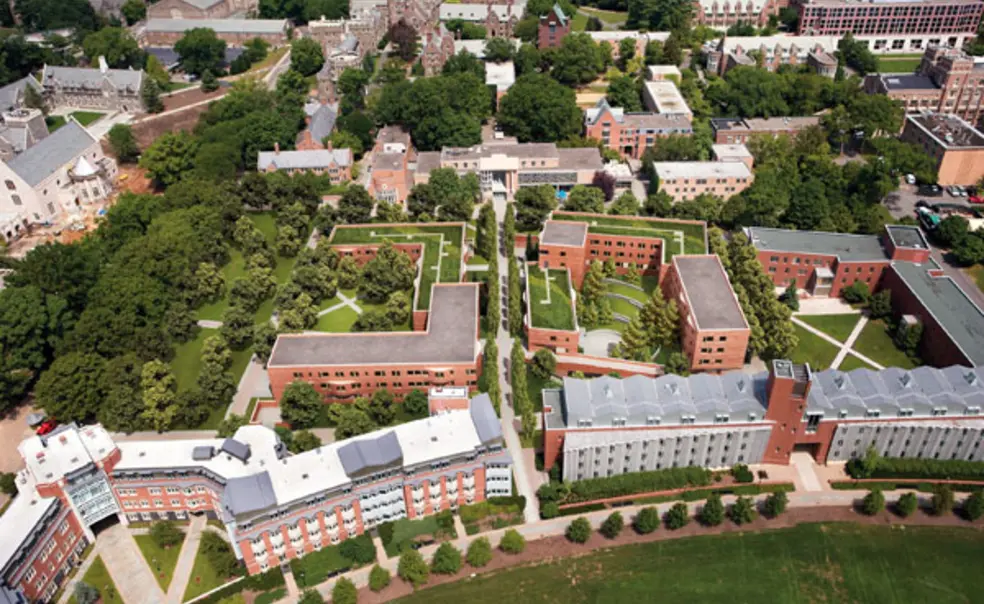Thinking green: Princeton sets sustainability goals
Princeton vowed to reduce its carbon dioxide emissions to 1990 levels by 2020, mirroring a goal set by the state of New Jersey last summer, as part of a sustainability plan released Feb. 21. The University’s plan also lists goals for resource conservation, research, education, and civic engagement.
Reaching the 2020 goal will require the University to cut carbon dioxide emissions by more than one-third (from about 150,000 metric tons in 2007 to 95,000 metric tons, the 1990 level), which poses a significant challenge for a campus that, according to the plan, already employs one of the nation’s most efficient central power facilities. And the campus is growing: Between buildings already added and construction planned in the coming decade, Princeton will have about 3.5 million more square feet to heat, cool, and illuminate in 2020 than it did in 1990.
Shana Weber, the University’s sustainability manager, said that reaching the 2020 goal is “going to require participation from everyone on campus ... from conservation in dorm rooms to installing geothermal [heating and cooling] systems on campus, from the visible to the invisible solutions.”
Executive Vice President Mark Burstein said that the plan will require “tens of millions of dollars” to support capital improvements, such as the construction of more energy-efficient buildings, and operational investments. The University also plans to use $325 million from its ongoing capital campaign for research and teaching in the areas of climate change and alternative energy.
In drafting the plan, the committee spelled out goals for “real and measurable progress.” Among the specific goals:
• Convert all cleaning products to Green Seal environmentally responsible products (or equivalent) by 2009.
• Increase the recycling rate for waste from dormitories and other campus buildings to 50 percent by 2012 (from 38 percent in 2007).
• Decrease the number of cars commuting to campus by 10 percent and cut per-student personal water use by 25 percent by 2020.
Stronger sustainable-building guidelines could help the University trim energy use. Under Princeton’s initial guidelines, released in 2006, new buildings and renovation projects were designed to be at least 30 percent more energy-efficient than building-code requirements. The sustainability plan calls for projects to be 50 percent more energy-efficient than the code requires, and all new buildings will be designed to meet the Leadership in Energy and Environmental Design (LEED) silver standards, set by the U.S. Green Building Council.
The 2020 carbon-emissions goal is the most significant target in the report, and it reflects the idea that commitment to environmental sustainability “begins at home,” according to Burstein. Several universities have pledged to become “carbon-neutral” by purchasing offsets, which fund off-site projects that reduce greenhouse gas emissions, but Princeton eschewed that option. “The solution to this problem can’t come from everyone buying offsets,” Burstein said. “Someone must decrease their own emissions.”
Improved storm-water management, upgrades for campus shuttles, and a greener approach to purchasing supplies could contribute to reducing Princeton’s environmental footprint, according to the plan.












No responses yet